NGC 1514, The Crystal Ball Nebula
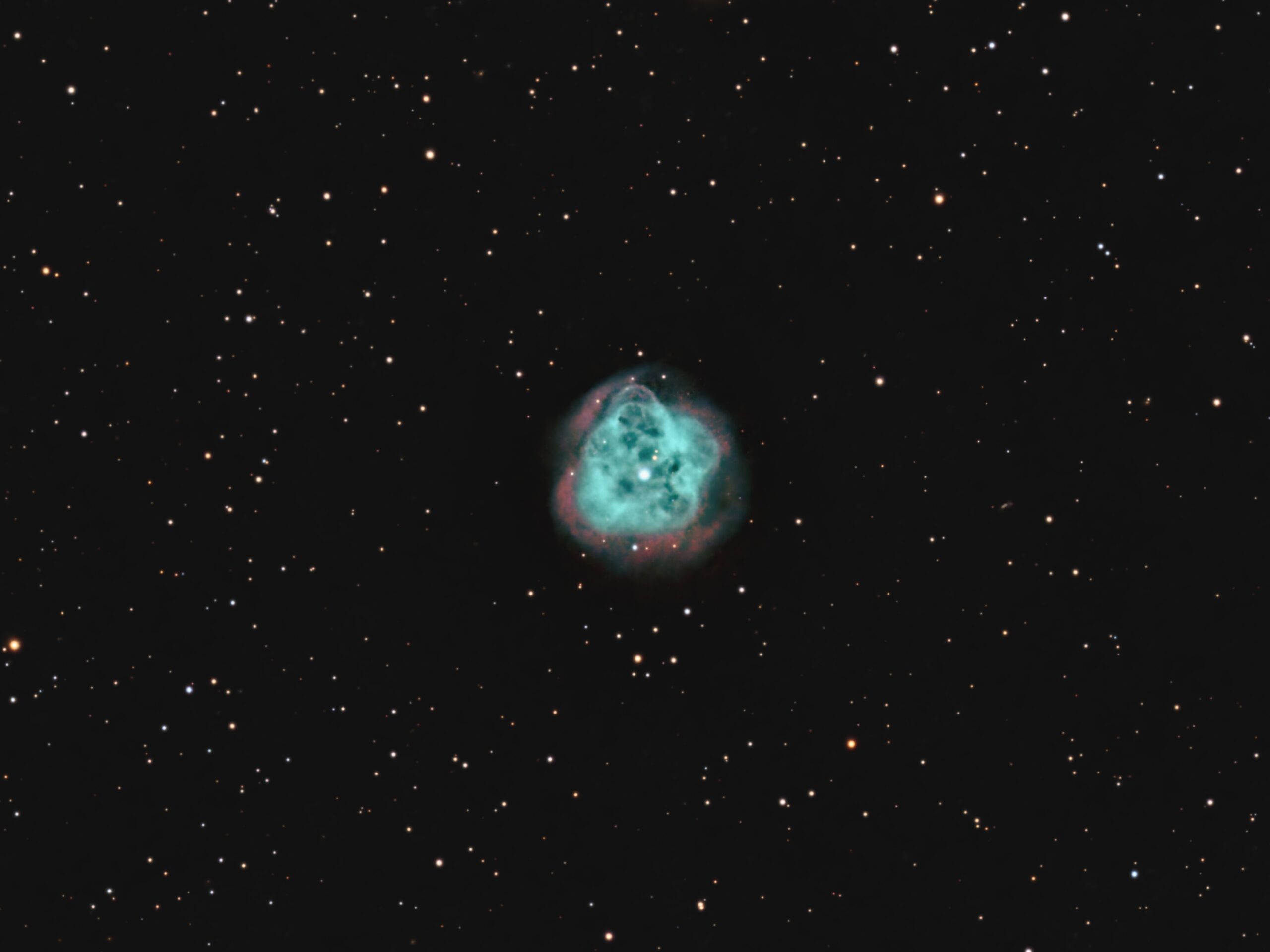 Click image for full size version
Click image for full size version
October 12, 2024
NGC 1514 is also referred to as the Crystal Ball Nebula. It lies about 1,500 light years away in Taurus, near the border with Perseus. It has a diameter of about 1 light year. Most pictures show NGC 1514 as a purely teal-coloured object, since it is dominated by oxygen emissions, but there was plenty of red signal from hydrogen, particularly in the outstkirts of the object. This object, like other planetary nebulae, is made up of the glowing gasses of a dying star. A few millenia from now, the gas will disipate and the nebula will no longer be visible.
Tekkies:
Acquisition, focusing, and control of Paramount MX mount with N.I.N.A., TheSkyX and PHD2. Primalucelab low-profile 2″ Esatto focuser and ARCO rotator. Equipment control with PrimaLuce Labs Eagle 4 Pro. All pre-processing and processing in PixInsight. Acquired from my SkyShed in Guelph. Excellent e transparency and above average seeing. Data acquired October 5-11, 2024 under a new to first quarter Moon.
Celestron 14″ F/11 EDGE HD telescope at f/11 (3,912 mm focal length) and QHY600M camera binned 2×2 with Optolong filters.
28x2m Red = 0hr56m
28x2m Green = 0hr56m
28x2m Blue = 0hr56m
55x5m Ha = 4hr35m
58x5m O3 =4hr50m
Total: 13hr12m
Preprocessing: The WeightedBatchPreProcessing script was used to perform calibration, cosmetic correction, weighting, registration, local normalization integration, and Drizzle integration of all frames.
Colour master: A colour master was made from the Red, Green and Blue masters using ChannelCombination in RGB mode.
Gradient Removal: DynamicBackgroundExtraction was applied to the RGB, Ha and O3 masters.
Colour Calibration: SpectrophotometricColorCalibration was used to calibrate the RGB master.
Deconvolution: BlurXterminator was used on the Ha, O3 and RGB masters with Automatic psf , and star sharpening set to 0.5.
Addition of Ha and O3: Jergen Turpe’s CombineRGBandNarrowband script was used to combine the Ha and O3 with the RGB.
Linear Noise Reduction: NoiseXterminator was applied to the HaO3RGB image with settings Amount=0.9 and Detail=0.15
Star Removal: StarXterminator was used to remove the stars, with default settings.
Stretching: HistogramTransformation was applied to the HaO3RGB master to make a pleasing image. Approximate background level after stretch was 0.07.
Nonlinear Processing
Nonlinear Noise Reduction: NoiseXterminator was used to reduce noise in the background areas of the image with settings Amount=0.9 and Detail=0.2
Re-stretch: HistogramTransformation was used to boost contrast by moving the dark point to the toe of the histogram and slightly decreasing the mid-point slider.
Contrast Enhancement: The CreateHDRImage script was applied (Multiscale median transform, scale 6 and a 35% blend) using a mask to select just the nebula. LocalHistogramEqualization was applied twice using a mask to select the entire nebula. A Contrast Limit of 1.5 and 1 iteration was used for each LHE application (scale 150, strength 0.5; scale 60, strength 0.35).
Sharpening: The mask used for LHE was used for sharpening with MultiscaleMedianTransform (Layers 2 – 6 with strengths of 0.03, 0.05, 0.05, and 0.01, respectively).
Stars-only steps: Stars were stretched with HistogramTransformation. A mask made by extracting the Luminance from the stars-only image. CurvesTransformation was used to add saturation to the stars through the mask using the Saturation tool.
Star Restoration: PixelMath expression combine(starless, stars, op_screen()) was used to combine the starless and stars-only images created with StarXterminator.
Final Steps: Background, nebula and star brightness, contrast and saturation were adjusted in several iterations using CurvesTransformation with masks as required. ICCProfileTransformation (sRGB IEC61966-2.1; Relative Colorimetric with black point compensation) was applied prior to saving as a jpg. The finder chart was made using the FindingChart process.

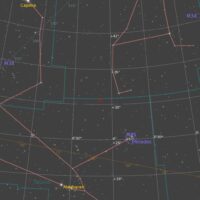
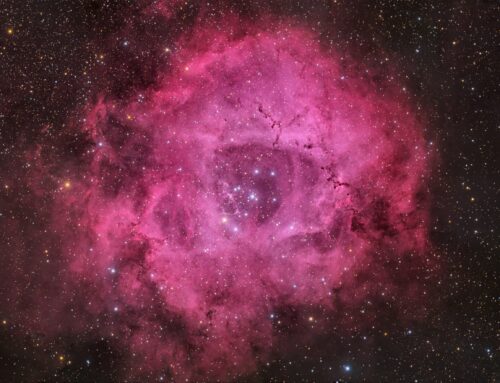
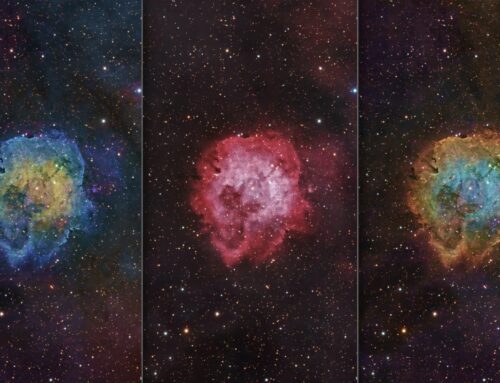
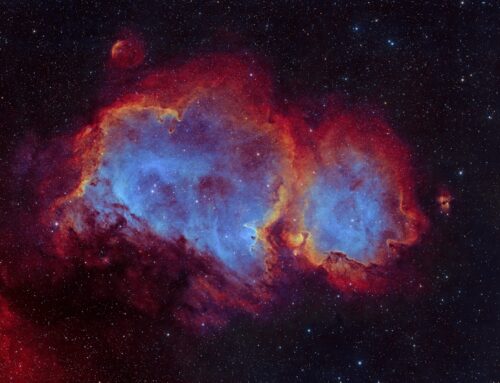


Leave A Comment